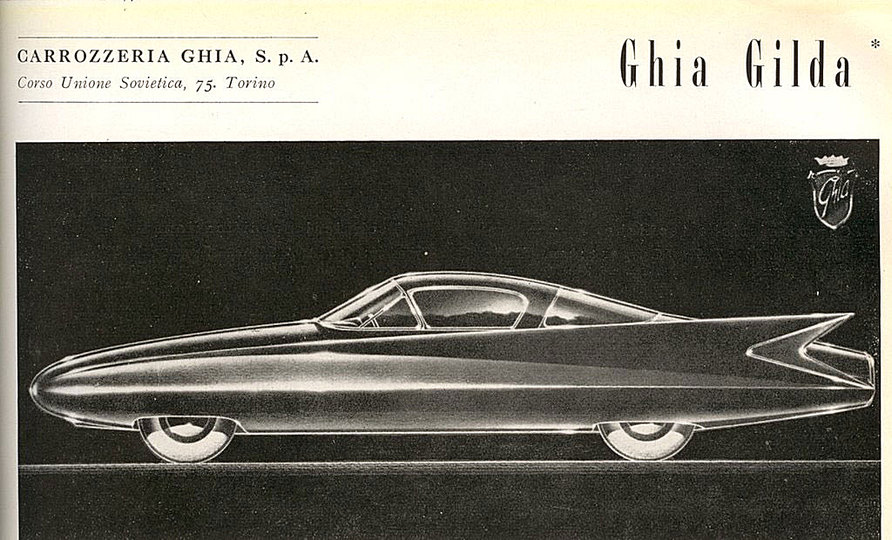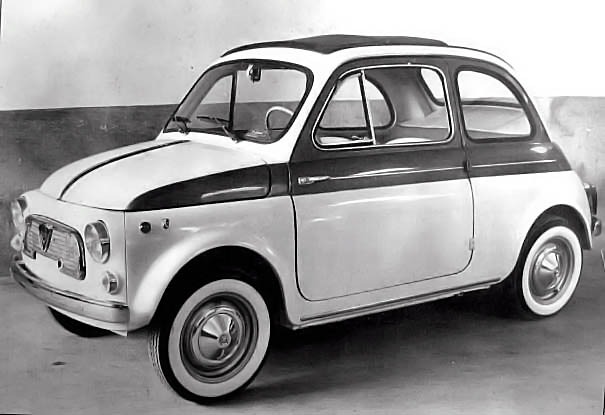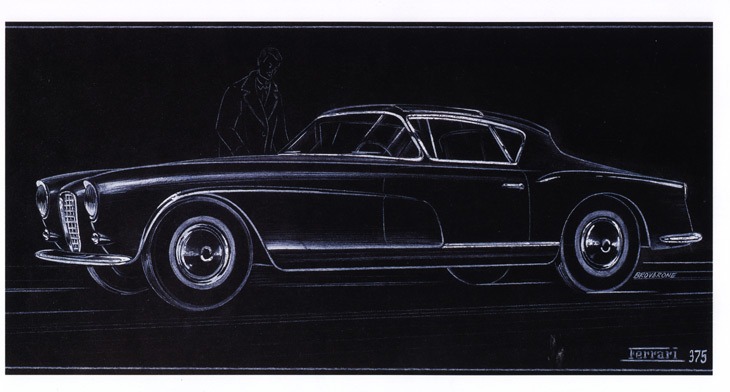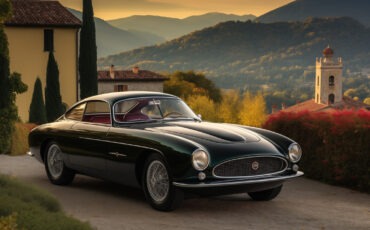
Italian coachbuilders have long been the pioneers of automotive design, known for blending art and engineering in a way that no other country has replicated. From iconic brands like Pininfarina and Bertone to lesser-known but equally significant names, Italy’s coachbuilders (Carrozzieri Italiani – our website’s name) have shaped the world of automotive elegance and innovation.
What is a Coachbuilder?
Before mass production became the norm, cars were built in two parts: the chassis (the mechanical structure) and the coachwork (the body). A coachbuilder was responsible for designing and crafting the body of the car, and the interior. This art form allowed for bespoke creations tailored to the tastes of elite clientele. Italian coachbuilders, in particular, became famous for their ability to turn these cars into rolling works of art.
The Birth of Coachbuilding: From Horse Coaches to Cars
The origins of Italian coachbuilders can be traced back to the late 19th century when companies specialized in building horse-drawn carriages. These early coachbuilders, known as “Carrozzieri”, laid the foundation for what would become an integral part of Italy’s automotive industry. Among the earliest and most notable coachbuilders were Carrozzeria Castagna and Cesare Sala, both of which were renowned for creating exquisitely crafted carriages for Europe’s aristocracy.

Carrozzeria Castagna: A Pioneer in Both Carriages and Automobiles
Founded in 1849 by Carlo Castagna, Carrozzeria Castagna was one of the first to transition from building horse-drawn carriages to creating custom bodies for automobiles. By the early 1900s, Castagna had become a leading name in the burgeoning automobile industry, producing bespoke cars for luxury brands like Isotta Fraschini and Alfa Romeo. Castagna’s early work set a high standard for craftsmanship and attention to detail, characteristics that would become hallmarks of Italian coachbuilding.
Cesare Sala: From Royal Carriages to Elite Automobiles
Another prominent coachbuilder from the late 19th century, Cesare Sala, also made the transition from carriages to automobiles. Based in Milan, Sala was known for crafting custom bodies for early luxury cars, which were often seen at the most prestigious events of the time. Like Castagna, Cesare Sala’s reputation was built on a tradition of working for royalty and the elite, a legacy that carried over into their work with automobiles.
The Pre-War Boom: Stabilimenti Farina, Pininfarina, Ghia, and Bertone
The early 20th century was a transformative period for Italian coachbuilders. As automobiles grew in popularity, new companies emerged, bringing innovation and new design philosophies to the industry. This era, preceding both World Wars, saw the birth of several legendary coachbuilders who would go on to dominate the Italian automotive landscape.

Stabilimenti Farina: The Precursor to Pininfarina
Founded in 1906 by Giovanni Farina, Stabilimenti Farina was one of the first Italian companies to specialize in automobile bodies. Stabilimenti Farina quickly became known for its innovative designs and high-quality craftsmanship. It was here that Battista “Pinin” Farina, Giovanni’s younger brother, learned the trade, absorbing the skills and passion that would later fuel the creation of his own legendary company.
Stabilimenti Farina made significant contributions to the pre-war automotive industry, crafting custom bodies for luxury brands like Fiat, Lancia, and Alfa Romeo. However, it was Battista Farina who would carry this legacy forward with the creation of Pininfarina in 1930, which would eventually eclipse Stabilimenti Farina in fame and influence.
Pininfarina: A New Era in Italian Design
In 1930, Battista “Pinin” Farina founded Pininfarina, a company that would become synonymous with elegance and performance in automotive design. Pininfarina’s focus on streamlined, aerodynamic designs helped revolutionize car aesthetics in the post-war era, cementing its status as one of Italy’s greatest design houses.
Pininfarina quickly established partnerships with major automakers such as Alfa Romeo, producing elegant, sleek cars that combined aesthetics with functionality. The company’s success continued through the decades, most notably with its long-standing collaboration with Ferrari from the 1950s onward, where Pininfarina became Ferrari’s exclusive coachbuilder (a relationship solidified in 1952).
Ghia: The gate to America
Founded in 1916 by Giacinto Ghia, Carrozzeria Ghia began by building custom cars, military vehicles, and buses. After World War I, Ghia shifted its focus to producing custom car bodies for luxury and performance vehicles. Ghia became known for its extravagant, bold designs that often broke with tradition, making its vehicles stand out for their futuristic aesthetics.

Ghia’s influence peaked in the 1950s and 1960s with designs like the Volkswagen Karmann Ghia and Chrysler Ghia Specials. These cars were noted for their streamlined, space age inspired, elegant shapes, often incorporating unique design elements that made them highly desirable in both Europe and the United States. Although Ghia was later acquired by Ford, its early designs remain iconic in automotive history.
Bertone: Bold Designs and Aerodynamics
Founded in 1912 by Giovanni Bertone, Carrozzeria Bertone initially focused on horse-drawn carriages before shifting to automotive design. By the 1920s, Bertone had begun working with car manufacturers like Fiat to create custom car bodies. The company became known for its focus on aerodynamics and bold, futuristic designs that set it apart from other coachbuilders.
Bertone’s golden era began after World War II when Giovanni’s son, Nuccio Bertone, took over the company. Under Nuccio’s leadership, Bertone developed some of the most iconic car designs of the 20th century, including the Lamborghini Miura in 1966, which is widely regarded as the world’s first supercar.
Carrozzeria Touring: The Art of Lightweight Design
Founded in 1926 by Felice Bianchi Anderloni and Gaetano Ponzoni, Carrozzeria Touring became famous for its innovative Superleggera (super-lightweight) construction technique. This method used a tubular frame covered by lightweight aluminum panels, which dramatically reduced the weight of the cars without sacrificing strength. This technique became a hallmark of high-performance Italian sports cars, with Touring designing some of the most iconic models of the era.
The Economic Boom of the 1950s: FIAT and the Rise of Smaller Coachbuilders
The 1950s saw an unprecedented economic boom in Italy, leading to a surge in demand for automobiles. FIAT, the largest car manufacturer in Italy, found itself unable to meet the growing requests from the public. To satisfy demand, FIAT began selling chassis to independent coachbuilders, who would then create custom bodies for the cars.
This unique collaboration between FIAT and independent carrozzieri led to the rise of several smaller coachbuilders, who offered consumers personalized and stylish alternatives to mass-produced FIAT models. Among these smaller coachbuilders were Monterosa, Monviso, Canta, and Mantelli. These companies carved out a niche in the market by creating bespoke designs that appealed to Italy’s growing middle class, offering an element of luxury and customization.

Notable Small Coachbuilders from the 1950s:
Monterosa, known for creating elegant, one-off designs that combined FIAT reliability with unique Italian style. Monviso, specialized in creating sporty, stylish bodies for FIAT cars, appealing to young professionals. Canta and Mantelli focused on producing limited-run custom vehicles with an emphasis on exclusivity and craftsmanship.
These smaller coachbuilders may not have achieved the international fame of companies like Pininfarina, Ghia, Vignale or Bertone, but their work contributed significantly to the rich diversity of Italian automotive design during the post-war era.
Ferrari and Pininfarina: A Legendary Partnership
While smaller coachbuilders flourished in the 1950s, one of the most significant collaborations in automotive history was unfolding between Ferrari and Pininfarina. Before 1952, Ferrari relied on various coachbuilders from Milan and Turin, including Vignale, Touring, and Ghia, to design its car bodies. However, that changed when Battista “Pinin” Farina proposed an exclusive partnership to Enzo Ferrari.

Pininfarina offered to exclusively design and build Ferrari’s car bodies, meaning no other coachbuilder would be involved, in exchange for constructing prototypes for Ferrari at no cost. This strategic partnership transformed both companies. Pininfarina’s designs gave Ferrari a cohesive and elegant brand identity, while Ferrari’s success on the racetrack enhanced Pininfarina’s global reputation. From 1952 onward, Ferrari cars were known not only for their performance but also for their striking, timeless design—thanks to Pininfarina.
Challenges and Reinvention: The Decline of Traditional Coachbuilders
The 1970s and 1980s marked a turning point for traditional coachbuilders. The rise of mass-produced cars made it difficult for coachbuilders to sustain their business models, leading to the closure or acquisition of many companies. For example, Bertone struggled financially in the 2000s and was eventually dissolved, while others, like Ghia and Vignale, were acquired by larger automotive groups.
However, some coachbuilders, like Pininfarina and Zagato, adapted to the changing landscape. Pininfarina expanded its design expertise into areas beyond automotive design, while Zagato focused on limited-run, bespoke projects for collectors and enthusiasts.
The Legacy of Italian Coachbuilders Today
Despite the challenges of modern times, the spirit of Italian coachbuilding continues to thrive. Coachbuilders like Carrozzeria Touring Superleggera still produce one-off and limited-edition cars for an exclusive clientele, while Zagato continues to design and produce bespoke vehicles that combine tradition with cutting-edge technology.

Conclusion
The history of Italian coachbuilders is one of innovation, artistry, and evolution. From their humble beginnings crafting horse-drawn carriages to becoming the world’s most revered car designers, Italian coachbuilders have shaped the automotive industry through their creativity and craftsmanship. The enduring legacy of names like Pininfarina, Bertone, and Zagato continues to inspire car enthusiasts around the globe, ensuring that the tradition of Italian automotive excellence will carry on for generations to come.


